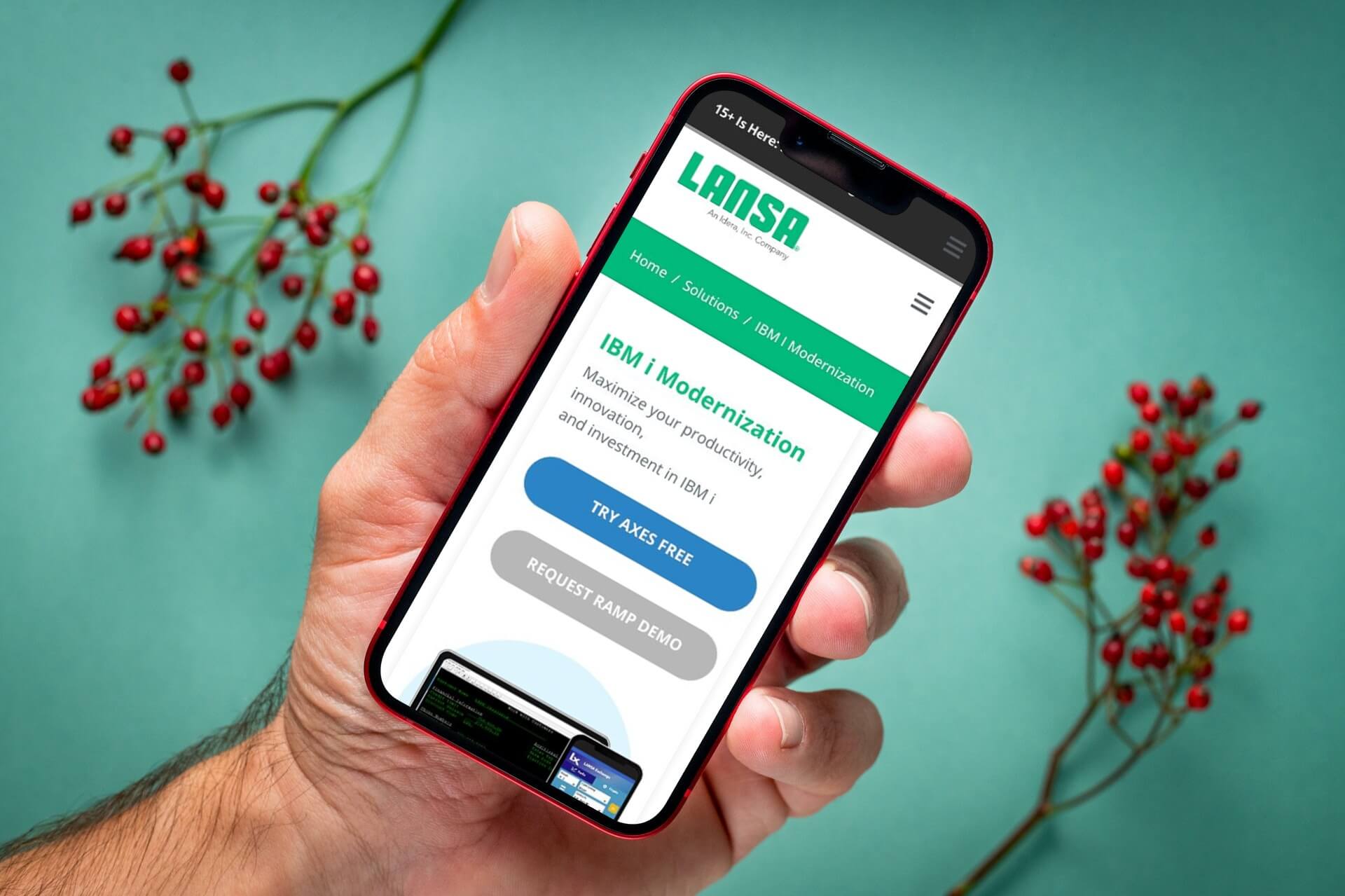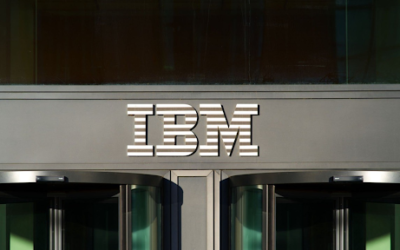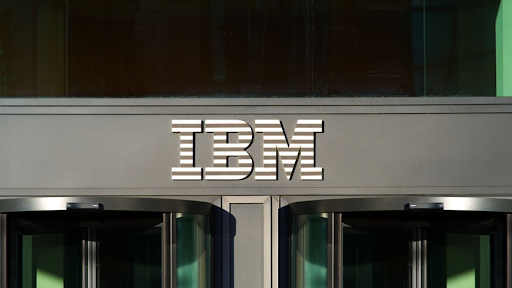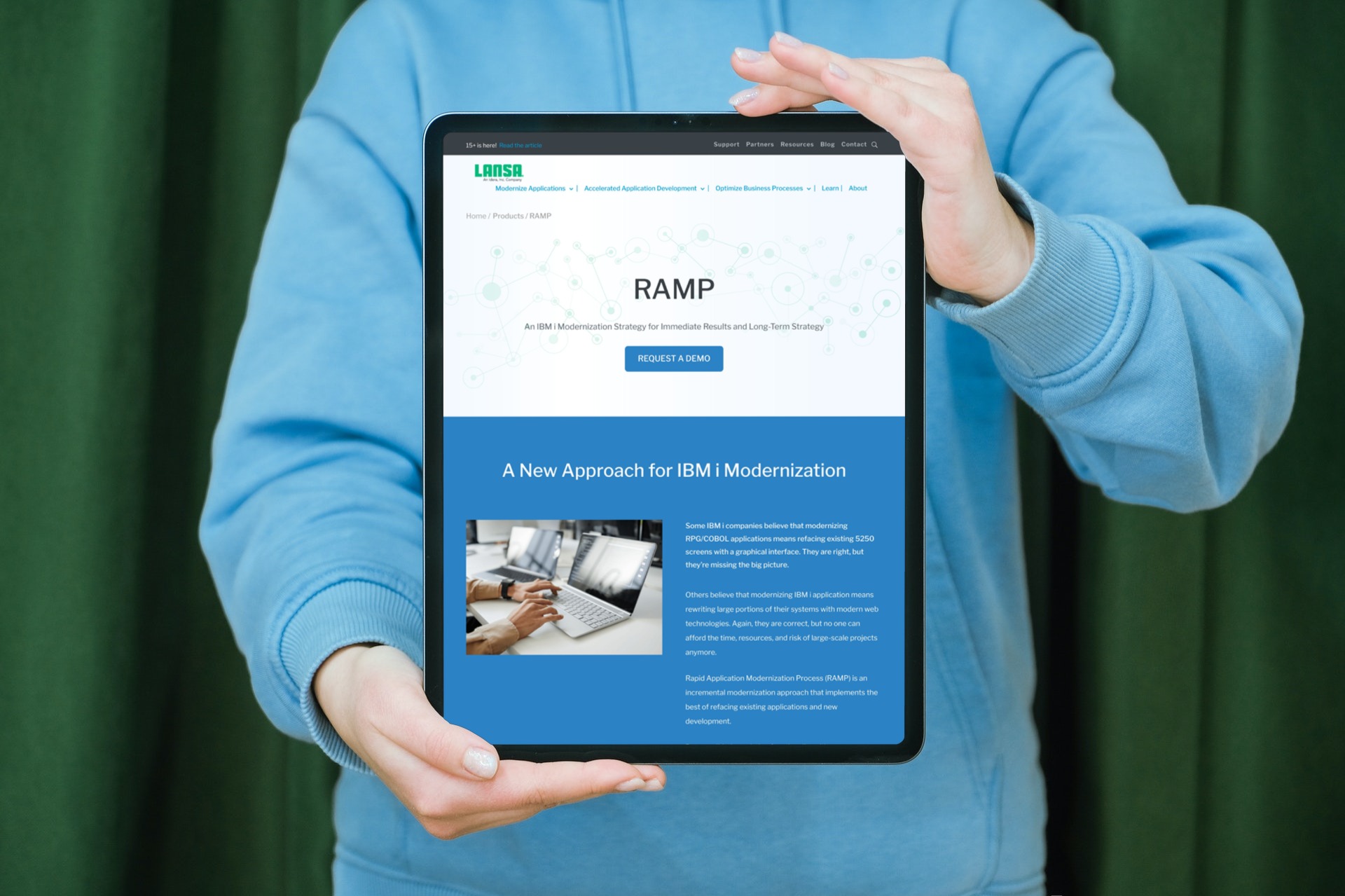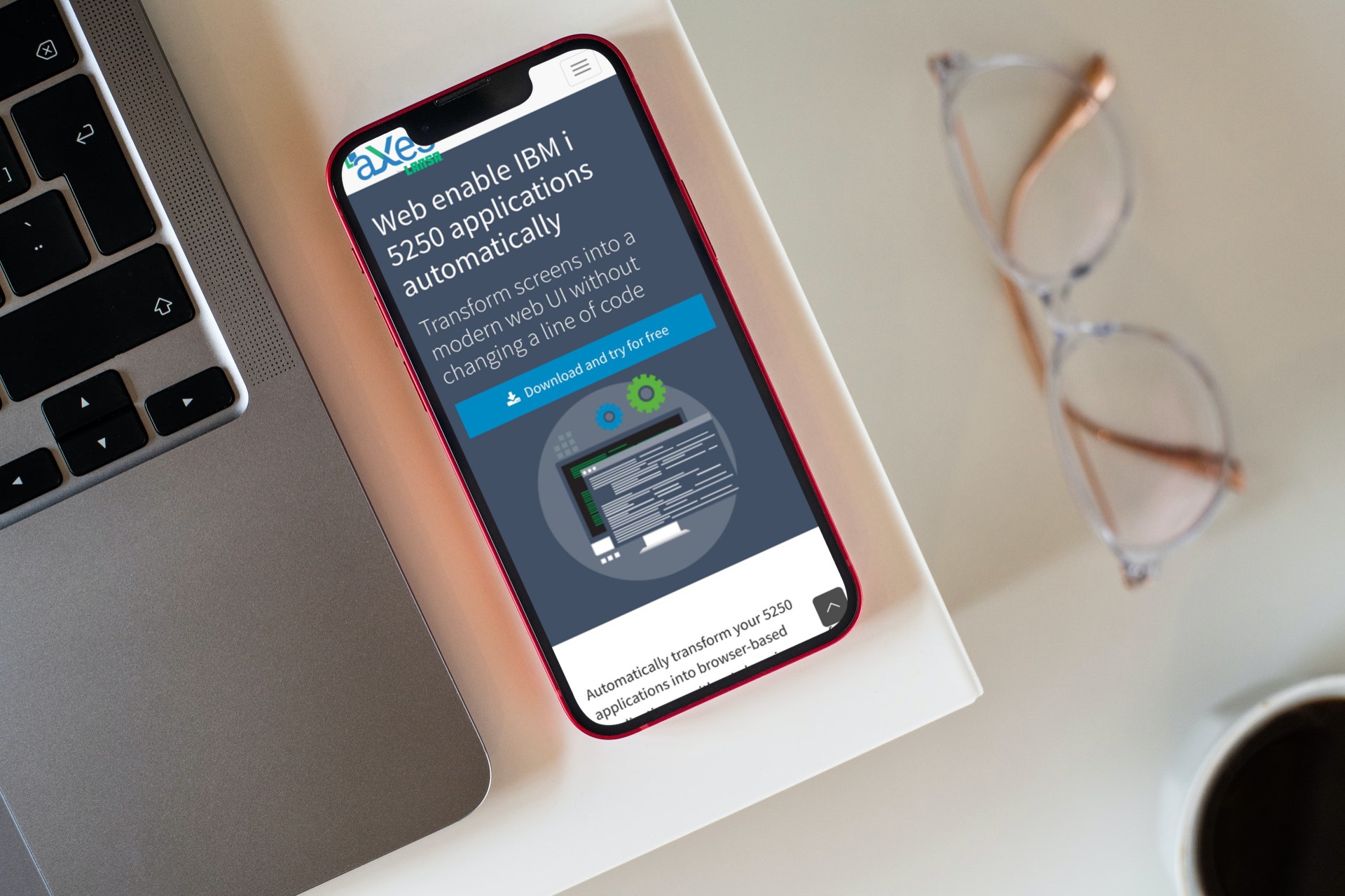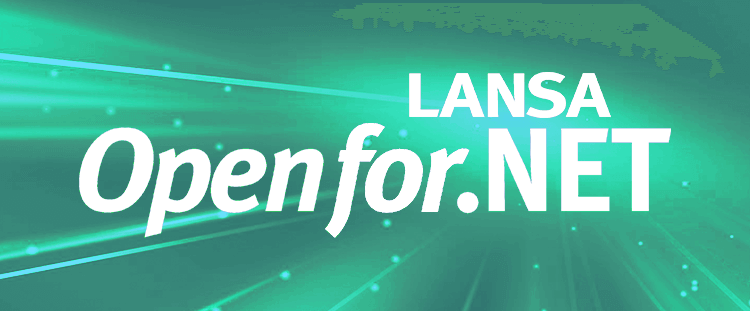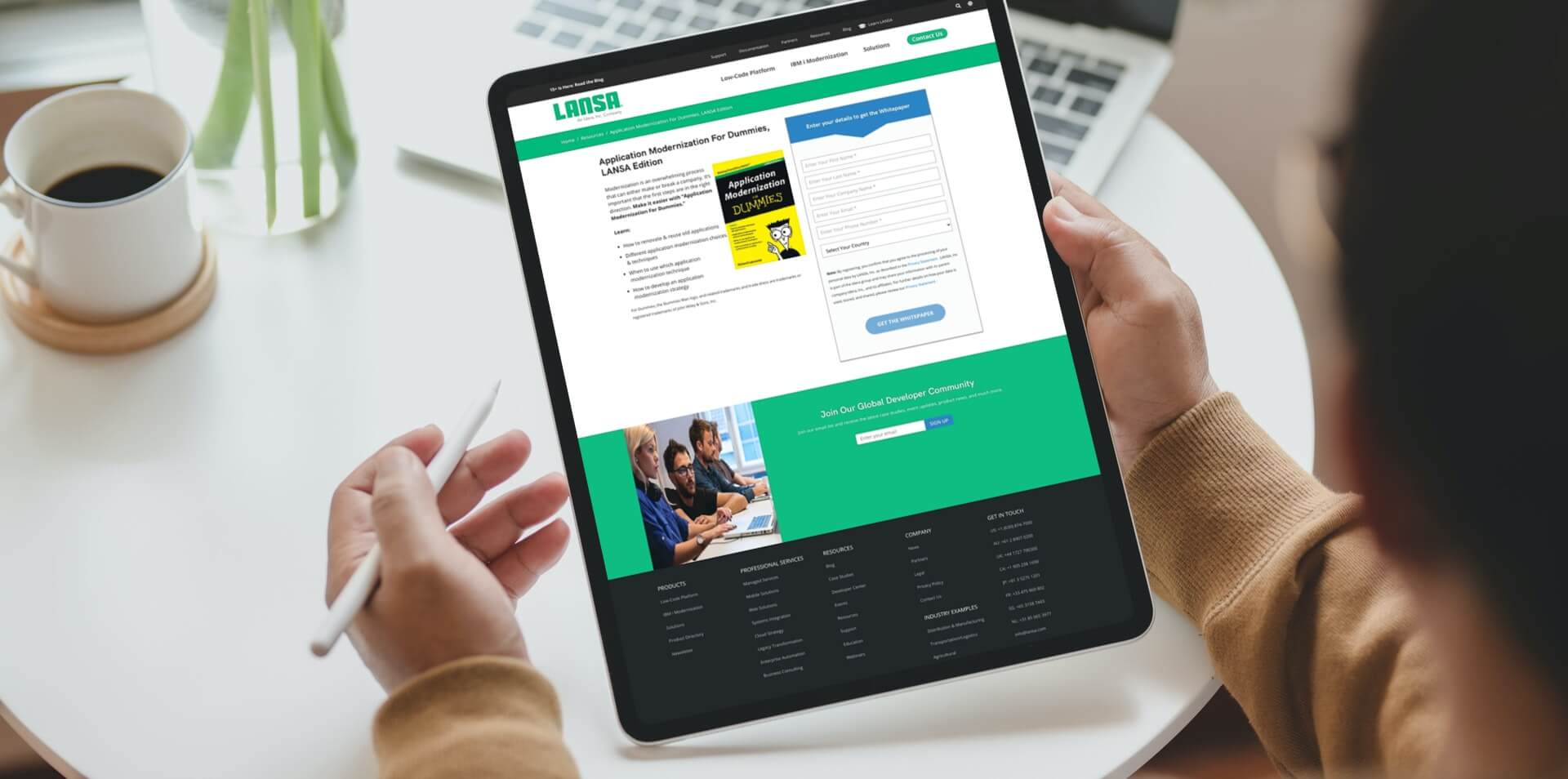At the end of 2021, digital transformation and the need to modernize business applications in the light of new generation enterprise technologies is hardly new. In fact, it’s a topic that has been kicking around for the last ten years. For many it may even seem like application modernization strategies are no longer relevant. After all, companies have been aware of technology shifts and the need to modernize legacy apps for years — the majority of them must have already moved on from their 5250 green-screens by now.
Unfortunately, it’s just not true. Even though the number of digital transformations has increased, they are far from pervasive. Legacy applications are still in use by a huge number of organizations. The one thing they all have in common is that they are reluctant about modernizing and don’t want to rush into it.
Is chain of command latency a digitization barrier?
Let skip the fallacy about the short-sightedness of this approach and the long-term negative effects of postponing modernization. There are dozens of arguments justifying the transformation of business IT systems, but they only go so far.
As always, the spread of technological innovations is hampered by the human factor also known as chain of command latency. Even top non-IT top managers aware of the importance of legacy tools transformation importance think twice before approving the budget for a new application project.
The truth is, many CFO’s see these issues from a whole different angle. They are far more willing to prioritize other needs instead over costly and potentially risky changes to an IT infrastructure that seems to be doing fine. In order to convince them to take the plunge, you need more than anecdotes of digital transformations and a generational shift in IT solutions.
So what does it take to get a CFO on board with an app modernization project? Overall, the approach to communicating the need to update legacy apps for new ones hasn’t changed much over the years. Be that as it may, there is n new sense of urgency to be considered — using legacy 5250 green-screens in 2022 is just not the same as relying on them in the late 2000s or early 2010s.
Learn more about how IBM application modernization can help boost productivity and user experience in your organization.
5 tips to justify app modernization to your CFO
Based on our experience, and relevant to the current business environment ecosystem, here are a few tips for “selling” an app modernization initiative to your CFO.
1. Should I estimate financial losses due to legacy maintenance?
It makes a lot of sense to lay a foundation by presenting your CFO with information explaining why maintaining the status quo is not a good solution from a financial point of view. The maintenance costs of legacy tools typically grow on a consistent basis, so it shouldn’t be too hard to come up with compelling numbers. Adding an estimation of financial losses caused by inefficient apps is a great way to demonstrate how modernization delays create financial burdens and budget leaks.
2. Should I showcase savings and profit losses due to not implementing a project earlier?
Another move that tends to be effective with CFOs and other top managers is estimating missed potential savings and financial gains as a result of implementation delays. Seeing genuine expenses and lost potential gains rise consistently on a year-over-year chart is typically something that gets a CFO’s heart racing.
3. Is there a way to highlight the importance of time and the latest trends?
On a more rhetorical note, remind your CFO that the times are changing and tardy front runners are falling far behind. After all, digital transformation is accelerating and driving rapid changes throughout business and industry. Recent global events, like COVID-19, also fuel the demand for Industry 4.0 solutions in a turbulent economy with changing market requirements. So remind your CFO that the need to modernize outdated legacy apps is much more critical now than it was five years ago.
Let’s look at how the AS400 can offer reliability and fast transaction speeds in this article about AS400 IBMi.
4. Can I come up with estimated gains and measurable impacts?
Another way to win over your CFO is through clear and well-presented calculations of the impacts and gains of app modernization. In general, it is always a good idea to list the measurable business impact of a modernized app. Estimating financial gains caused by the introduction of a modern business application is something your CFO can relate to.
5. Should I calculate expected risks?
Potential risks are one of the main factors restraining top managers from actually greenlighting many modernization projects. This is why calculating the potential risks and negative impact of a modernization project is important. Identify all potential risks, estimate their likelihood, and present the expected costs of each risk to show you have done your homework.
Explore more information about the IBM AS 400 system and how it can help your organization’s core applications and ERP systems.
What is the ultimate tip? Use affordable and proven app modernization tools!
That said, the best way to convince your CFO is to present them with a modernization project they can’t refuse. If your budget is reasonable and you can mitigate the risks, your work is done.
To do this, select the right tools for your app modernization project. This allows you to minimize project costs, deliver new apps on time, control the process and reduce risks.
Visual LANSA is a low-code development platform. It enables accelerated application development by simplifying IBM i app development and minimizing the need for technical skills.
LANSA incorporates a variety of powerful tools. These include several instruments exclusively for IBM i that make modernizing its apps and systems as easy as possible.
RAMP
Rapid Application Modernization Process (RAMP) is an incremental modernization approach. It combines the advantages of both refacing existing applications and new development. By consolidating existing functionality with new capabilities with RAMP, you get the applications you want without throwing everything away. You modernize in stages, adding new functionality incrementally without serious impact to business operations. You also end up with a consistent user interface across all applications.
LongRange
LongRange is a mobile app builder for building native apps for IBM i with RPG, COBOL or CL programming languages. With LongRange mobile app builder, you can quickly and inexpensively deliver, maintain, and update mobile apps to your users.
How can I transform outdated 5250 green-screens instantly with aXes?
LANSA’s tools may completely help you eliminate the need to reason with CFOs to approve modernization projects. With LANSA tools, you can update legacy apps with minimal time and effort. aXes for IBM i modernization is the perfect example.
aXes allows you to automatically web-enable IBM i 5250 applications. Transform existing 5250 screens into web pages out-of-the-box, without changing source code. You can also change the modernization rules to suit your requirements and automatically apply your changes to all application screens.
Ready to get started? Contact us at Lansa.com.


